
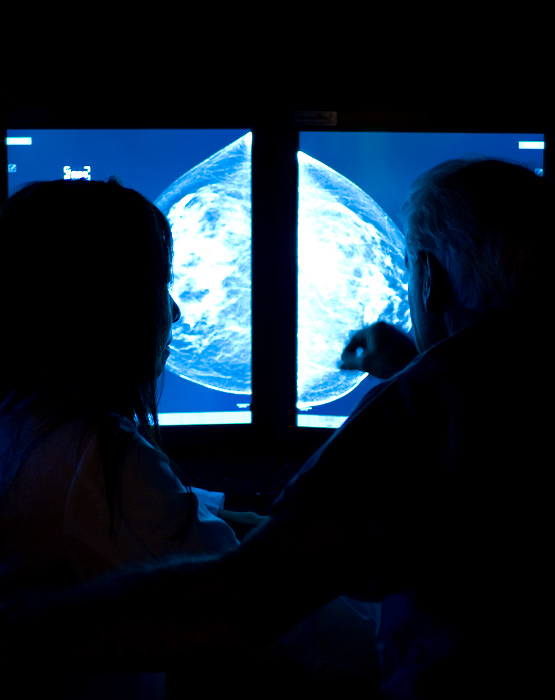
Breast Imaging
Our breast imaging radiologists are dedicated specialists who are leaders in the field. Studies have shown that specialist radiologists detect more cancers and have lower recall rates than general radiologists.
Breastlink’s state-of-the-art breast imaging technology combined with superior expertise, will provide you with the most accurate results and best patient care.
Breast Imaging Offered at All Breastlink Locations across California and Arizona including our Mobile Mammography Fleet.
Self Requesting Mammograms
Women over 40 who are not experiencing symptoms can make an appointment for their annual screening mammogram on their own, without an order from their physician.

Breast Imaging at Breastlink?
Breast imaging refers to the various diagnostic imaging procedures performed by radiologists for breast cancer detection, diagnosis, and prevention. It involves a range of imaging procedures including:
Screening Mammography
Used to detect breast cancer before any symptoms are present, allowing for early treatment and intervention.
Diagnostic Mammography
Used when symptoms are present to confirm whether changes are benign (non-cancerous) or if breast cancer may be present and treatment is required.
Breast Tomosynthesis
Digital mammography technique that produces 3D images of the breast, giving a complete, detailed impression of the breast.
Breast Ultrasound
Often used as a companion screening tool with mammography.
AI Powered Mammography with EBCD
Enhanced Breast Cancer Detection (EBCD) uses artificial intelligence to help radiologists detect even subtle lesions.
Breast MRI
Used for women who have been identified as “high risk,” or those with dense breasts, usually in conjunction with a mammogram screening.
Breast Imaging @Breastlink
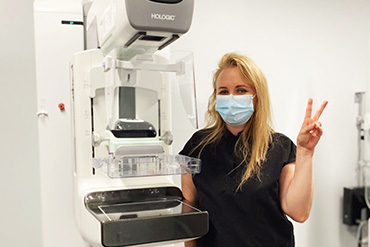
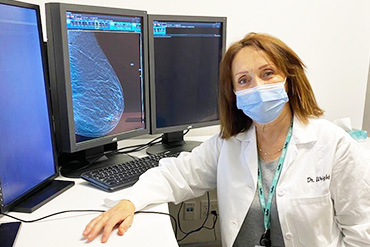
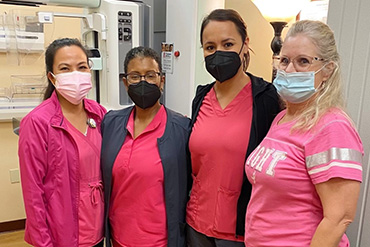
3D Mammography with Dr. Jason McKellop
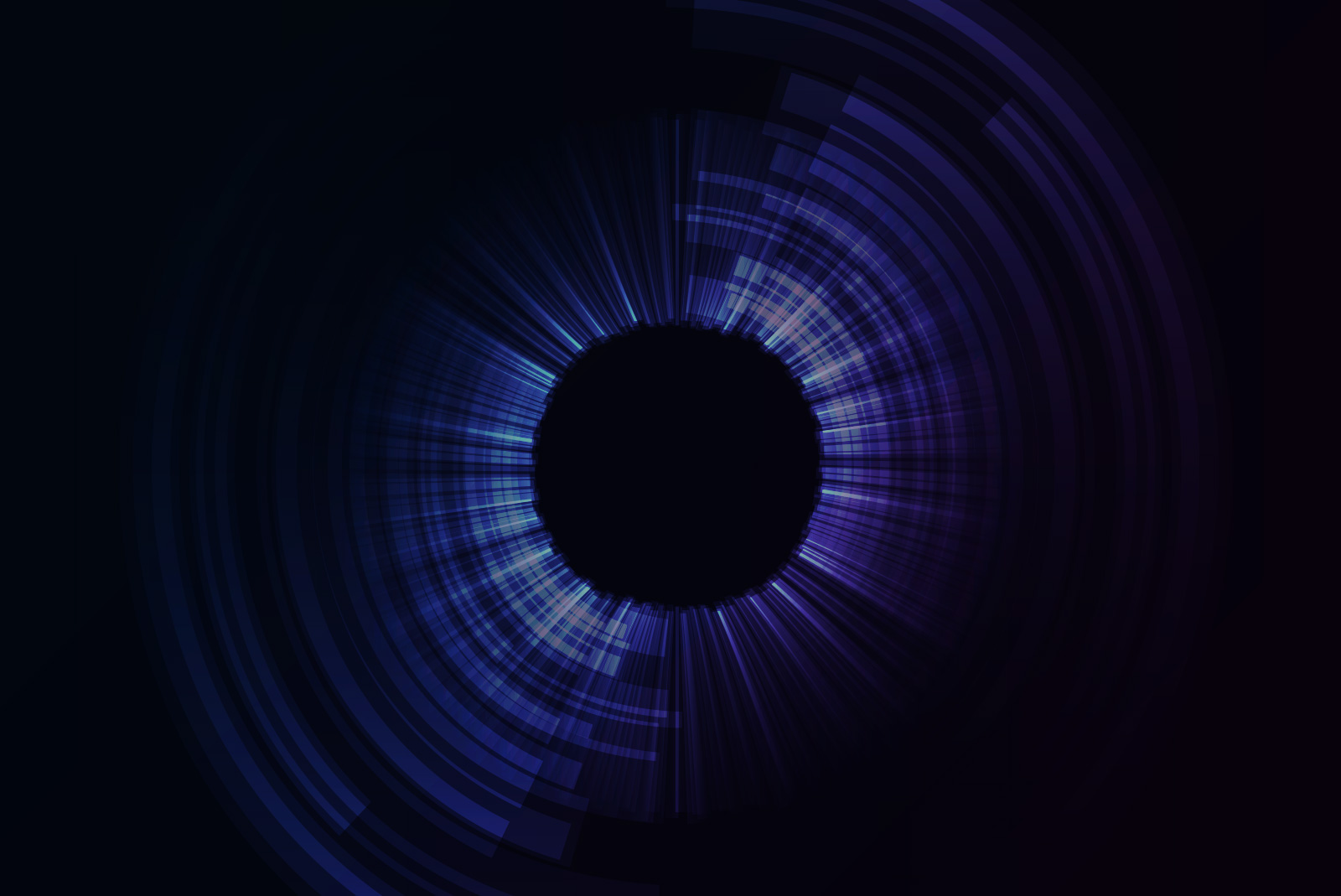
Put the Power of Artificial Intelligence Behind Your Mammogram!
At Breastlink, we are transforming breast cancer detection with a revolutionary offering called Enhanced Breast Cancer Detection (EBCD). EBCD is the only solution of its kind—a package of breast care tools that work in concert to optimize your annual breast cancer screening exam. If you want greater confidence in your results, schedule your screening mammogram appointment today and say YES to EBCD!
LEARN MOREBreast Imaging Explained
-
3D Mammography
3D Mammography is a new technology that offers many benefits over traditional mammography.
What is 3D Mammography?
3D mammography, or breast tomosynthesis, is a relatively new breast imaging procedure approved by the U.S. Food and Drug Administration in 2011.
Like traditional mammography, 3D mammography uses X-rays to produce images of breast tissue in order to detect lumps, tumors or other abnormalities. 3D mammography is capable of producing more detailed images of breast tissue.
3D captures multiple slices of the breast, all at different angles. The images are brought together to create crystal clear 3D reconstruction of the breast. The radiologist is then able to review reconstruction, one slide at a time, almost like turning pages in a book. This makes it easier for doctors to see if there’s anything to be concerned about.
Why is 3D Mammography Performed?
Traditional mammography produces just two images of each breast, a side-to-side view and a top-to-bottom view. 3D mammography produces many X-ray images of the breasts from multiple angles to create a digital 3-dimensional rendering of internal breast tissue. This allows radiologists to view the breast in 1-millimeter ‘slices’ rather than just the full thickness from the top and from the side.
3D mammography can be used for routine screening mammography and may be particularly effective for women with dense breast tissue or those at high risk for developing breast cancer.Research suggests that radiologists are able to more accurately interpret results from 3D mammography in dense breast tissue, which can lead to fewer false-positive and false-negative readings.
What to Expect from 3D Mammography
Preparation
Women should prepare for a 3D mammography in the same way they would prepare for traditional mammography.
- Women should consider scheduling mammography for a date one week after their period begins, as just after menstruation a woman’s breasts will be the least tender.
- 3D mammography requires a bare torso, so wearing comfortable, easy-to-remove clothing is recommended.
- Deodorant, perfume, lotion and other products should not be applied to the underarm or torso before 3D mammography because they can interfere with the imaging process.
- Women should inform their physician if they are pregnant, breastfeeding, have breast implants or suffer from any medical conditions.
Procedure
The 3D mammography procedure resembles that of traditional mammography. The procedure takes place in a private room and is conducted by a radiologic technologist. The woman undergoing 3D mammography is required to remove any clothing above the waist, as well as any jewelry or other objects that might interfere with the imaging process.
During the procedure, the woman is positioned before a 3D mammography machine and her breasts are held in place by two compression plates. The pressure placed on the breasts by the compression plates can cause discomfort but only lasts for a few seconds.
When ready, the radiologic technologist will start the 3D mammography machine and a robotic arm will move in an arc over the woman’s breasts as multiple X-ray images are taken. The dose is similar to film mammography and is only slightly higher than in standard 2D digital mammography.
The scan itself takes less than two to three seconds per view. The entire procedure takes approximately 10 to 20 minutes.
Results
A radiologist will interpret the results of 3D mammography, looking for signs of calcification or masses in the breast tissue, and report findings according to a standardized classification system known as Breast Imaging Reporting and Data System (BI-RADS).
A woman and/or her primary care physician will be notified if her 3D mammography reveals that she has dense breasts or an abnormality in her breast tissue. If an abnormality is detected, a Breastlink radiologist will likely recommend additional imaging procedures to help provide women with greater clarity and determine the cause of any true abnormality.
-
Mammography
Mammography plays a key role in the early detection of breast cancers.
What is Mammography?
Mammography is a breast imaging procedure that uses X-rays to produce images of breast tissue. Mammography is performed to find abnormalities in a woman’s breasts, such as tumors or lumps, which may not be evident during physical examination. Images produced by mammography, called mammograms, are examined by a radiologist to determine if an abnormality exists.
Why is Mammography Performed?
Mammography is the most widely performed breast cancer screening procedure and the only breast cancer screening procedure proven to reduce the risk of death from breast cancer. Approximately 16 million mammograms were conducted in in 2012.
Current mammography guidelines from the American Cancer Society, the American College of Radiology, the American Congress of Obstetricians and Gynecologists and the American Society of Breast Disease recommend a screening mammogram every year for women beginning at the age 40. The National Cancer Institute adds that women who have had breast cancer and those who are at increased risk due to a genetic history of breast cancer should begin screening before the age 40.
There are two types of mammography: screening mammography and diagnostic mammography.
- Screening Mammography: Screening mammography is used to check for breast cancer or other breast conditions in women with no symptoms and no previously detected breast abnormalities. Screening mammography should be part of the routine health care services a woman receives because it can detect breast cancer earlier than a physical examination, vastly improving her chances of survival.
- Diagnostic Mammography: Diagnostic mammography is generally performed after a breast abnormality has been detected by screening mammography or physical examination. Diagnostic mammography involves taking more X-ray images, often focused on the specific location of an abnormality, than are produced during screening mammography. This procedure provides a woman and her physicians with more information about a previously detected abnormality.
What to Expect from a Mammography
Preparation
There are several steps women can take to prepare for mammography.
- Because breasts can become especially tender during menstruation, women should schedule mammography for a date one to two weeks after their period begins.
- Caffeinated foods and beverages can exacerbate breast pain, so women experiencing frequent breast pain should avoid them for five to seven days prior to mammography.
- Wearing comfortable, easy-to-remove clothing is recommended, as mammography requires a bare torso.
- Applying deodorant, perfume, lotion or other products to the underarm or torso is discouraged because they can interfere with the imaging process.
- Pregnant women, women who are breastfeeding, women with breast implants and women with other medical conditions should be sure to inform their physician.
Procedure
During the procedure, a woman undergoing mammography is joined by a radiologic technologist in a private room and asked to remove any clothing above her waist, as well as any jewelry or other objects that could interfere with the imaging process.
She is then positioned before a mammography machine and her breasts are placed between two compression plates to hold them still. This can cause discomfort or pain. The technologist will then take two images of each breast, one from top-to-bottom and one from side-to-side. The procedure takes approximately 20 to 30 minutes. Following the procedure, the technologist will view the images to assess quality and may ask to take additional images.
Results
The results of mammography are interpreted by a radiologist, who examines a woman’s breast density and looks for signs of calcification or masses in the breast tissue. The results are reported according to a standardized classification system known as Breast Imaging Reporting and Data System (BI-RADS).
If an abnormality is found or a woman is determined to have dense breasts, the radiologist will inform her and/or her primary care physician. A Breastlink radiologist will most likely recommend additional imaging procedures to help provide women with greater clarity.
It is important to note that the presence of an abnormality does not necessarily mean a woman has breast cancer. A diagnosis of breast cancer cannot be made based on the results of screening mammography alone.
-
Breast Ultrasound
Certain women at high risk for developing breast cancer may consider breast ultrasound in addition to screening mammography.
What is Breast Ultrasound?
Ultrasound uses sound waves to produce images of internal organs and body tissue. Breast ultrasound is an imaging procedure that is not routinely used for screening, but it can be useful for evaluating some breast abnormalities identified by mammography. There is no radiation involved.
Why is Breast Ultrasound Performed?
Breast ultrasound is primarily used to help physicians diagnose potential breast abnormalities previously detected by physical examination or mammography. Ultrasound can determine the difference between solid masses in breast tissue and fluid-filled cysts. It can also help determine whether a solid mass is a potentially cancerous tumor or a non-cancerous growth.
Many cancers are not visible on ultrasound and it is not intended to replace routine screening mammography. However, some physicians may recommend breast ultrasound in addition to screening mammography for certain women, such as those with dense breasts.
What to Expect from Ultrasound
In addition to traditional ultrasound is available at Breastlink Orange.
Traditional Breast Ultrasound
A woman receiving a breast ultrasound will be asked to remove clothing above her waist and she will be positioned on her back on an examination table. Ultrasound gel will be applied to the area of her breast being examined.
The radiology technologist performing the breast ultrasound will move a handheld device, called a transducer, over the examination area. The transducer tracks movements of sound waves through breast tissue and transmits this information to a computer, which renders it visually on a monitor in real time.
A breast ultrasound exam does not cause pain and takes approximately 30 minutes.
-
Breast MRI
Breast MRI is an effective supplement to screening mammography for women at high risk for breast cancer.
What is Breast MRI?
Magnetic Resonance Imaging (MRI) uses magnets to produce images of internal organs. There is no radiation involved. Breast MRI is an imaging procedure that can provide more detailed information on breast tissue that may not be seen by mammography. Breast MRI is only used as a supplement to, and never a replacement for, mammography.
Why is Breast MRI Performed?
Breast MRI produces images of breast tissue by detecting movements of atoms within the body, which can reveal valuable information about a breast abnormality or disease. While breast MRI can be a useful supplement to mammography, it cannot detect certain abnormalities revealed by mammography, such as calcium deposits.
Breast MRI may be recommended, in addition to screening mammography, for some women at high risk for developing breast cancer. Breast MRI is also used for women who have been diagnosed with breast cancer, to measure the cancer’s size and track changes during treatment.
American Cancer Society guidelines recommend routine breast MRI in addition to screening mammography for women who:
- Have completed a breast cancer risk assessment and have a 20 percent or greater lifetime risk of developing breast cancer.
- Have an identified BRCA1 or BRCA2 gene mutation.
- Have immediate family members, such as a mother or sister, who have identified BRCA1 or BRCA2 gene mutation.
- Have a significant family history of breast or ovarian cancer on either side of their family.
- Have undergone radiation therapy to the chest between the ages of 10 and 30.
- Suffer from or have immediate family members that suffer from certain medical conditions, such as Li-Fraumeni syndrome, Cowden syndrome or Bannayan-Riley-Ruvalcaba syndrome.
What to Expect from Breast MRI
Preparation
There are several steps women can take to prepare for a breast MRI.
- Wearing comfortable, easy-to-remove clothing is recommended because breast MRI requires women to change into a gown.
- Jewelry and other metal accessories, such as piercings or hairpins, should be removed prior to the exam because they can interfere with the imaging process.
- Women who are pregnant, who suffer from kidney disease, who have recently undergone surgery, who have medical device implants or who suffer from other medical conditions should be sure to inform their physicians.
Procedure
A woman undergoing breast MRI is positioned face down on an examination table that slides in and out of an MRI machine, which is shaped like a large cylindrical tube. The woman will be required to receive an intravenous injection of contrast dye, which helps define the internal structure of breasts on MRI images.
A breast MRI will not cause pain, but the woman undergoing breast MRI must remain still for the duration of the imaging process. Remaining still for the duration of the imaging process can be difficult. Women should inform their physicians if they suspect it will be difficult to remain still for an extended period of time in a small space. The imaging process lasts 30 to 45 minutes and the entire examination takes approximately 60 minutes.
Results
The results of breast MRI are interpreted by a radiologist. Depending on the reason(s) for a breast MRI, the radiologist may be looking for signs of cancer or attempting to learn more about an existing abnormality. If a woman requires additional imaging procedures, or a breast MRI detects an abnormality, Breastlink radiologists will inform her and/or her primary care physician.
-
Breast Biopsy
If a breast lesion has been detected, a breast biopsy may be required to determine its cause.
What is a Breast Biopsy?
A breast biopsy is a medical procedure that extracts a tiny sample of breast tissue from the body for the purpose of testing. A breast biopsy may be performed in women who have detected a lump during physical examination, or in women whose screening mammography revealed a potential lesion. There are several different types of breast biopsy.
Why are Breast Biopsies Performed?
Breast imaging procedures help patients and their physicians detect potential abnormalities in breast tissue. Breast imaging procedures can also help physicians rule out cancer in some women who have detected a potential abnormality. However, a breast biopsy is required for physicians to make a conclusive breast cancer diagnosis.
Different types of breast biopsies are performed for different reasons. If a woman’s physician recommends a biopsy, she should ask why.
What to Expect From a Breast Biopsy
Breast biopsy experiences will vary based on the type of biopsy being performed. Image-guided biopsies use medical imaging technologies during the process to help physicians locate problem areas. The type of breast biopsy a physician recommends will depend on a patient’s specific circumstances, such as the location and size of a lesion in her breast.
The different types of breast biopsy include:
Fine Needle Aspiration Breast Biopsy
In a fine needle aspiration breast biopsy procedure, an extremely thin needle attached to a syringe is used to extract a small amount of cells from a woman’s breast tissue. Fine needle aspiration biopsy is an effective method for distinguishing solid masses from fluid-filled cysts. It can also be used to drain a painful benign cyst, if a patient desires.
Core Needle Breast Biopsy
Core needle biopsy uses a thin, hollow needle to extract tissue samples from the breast tissue. Prior to core needle biopsy, anesthesia will be injected into the target area. This numbs the breast of the woman being biopsied to prevent pain, but allows her to remain awake and alert during the procedure. Between two and six samples are extracted and each is approximately the size of a grain of rice.
Stereotactic Breast Biopsy
Stereotactic biopsy uses mammography during core biopsy to help a radiologist determine the exact location of the concern within a breast to be biopsied.
Ultrasound-guided Breast Biopsy
Ultrasound may be used during fine needle aspiration biopsy or core needle biopsy to help a radiologist determine the exact location of the mass within a breast to be examined.
MRI-guided Breast Biopsy
MRI may be used during a core biopsy to help a radiologist determine the exact location of the mass within a breast to be biopsied. This is used for concerns seen only on a MRI.
Surgical Breast Biopsy
If physicians are unable to determine the exact nature of a breast abnormality using needle biopsy, surgical biopsy may be required. There are two types of surgical biopsies: incisional and excisional.
During incisional biopsy, surgeons remove just enough of a suspicious area to make a diagnosis. During excisional biopsy, surgeons attempt to remove all of the suspicious area. Surgical biopsies require either local or general anesthesia, often require stitches and may cause scarring.
Services
Breastlink delivers comprehensive care, encompassing imaging, risk assessment, surgery, oncology, and reconstruction. Our integrated, dedicated team collaborates on personalized treatment plans, ensuring patients receive the highest-quality breast health services.
All ServicesDoctors
Breastlink's extensive network of breast specialists includes oncologists, radiologists, surgeons, and more, all devoted to breast health. Our breast experts collaborate, providing personalized, compassionate care tailored to every unique patient's needs.
Browse DoctorsLocations
Breastlink's multi-disciplinary breast health centers in California & Arizona offer 3D mammography, Breast MRI, surgery, oncology, and more. Our dedicated approach ensures top-quality care, enabling patients to actively participate in their breast health journey.
Find a Location

